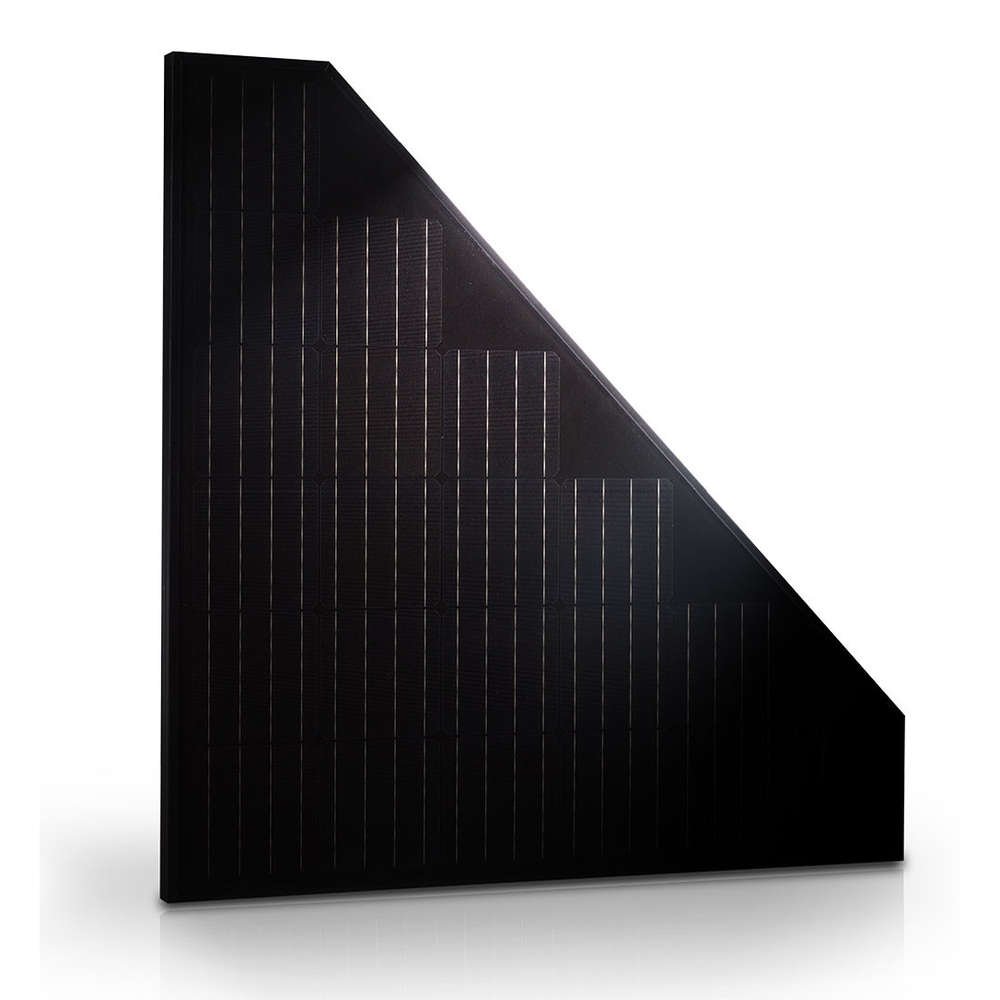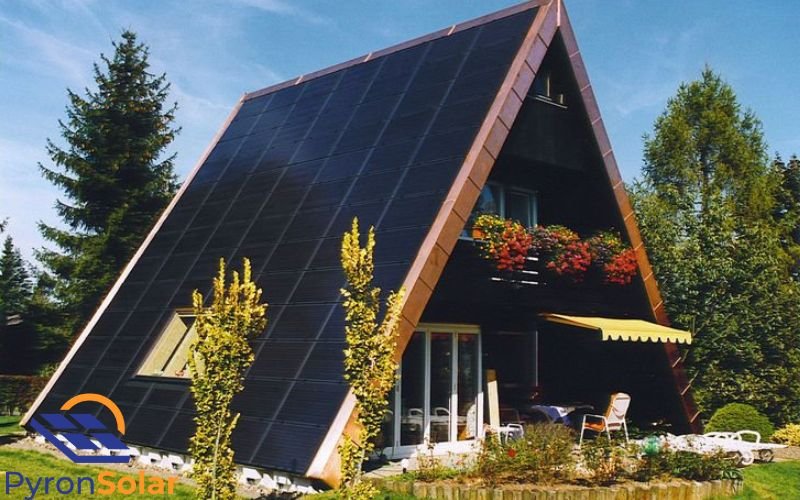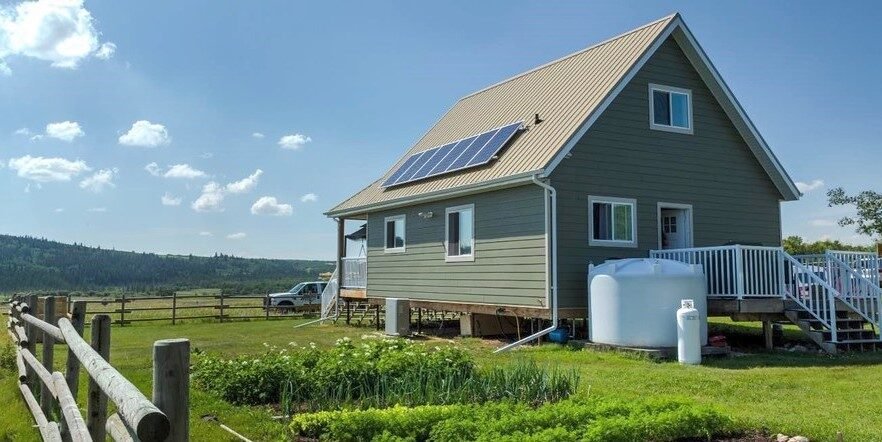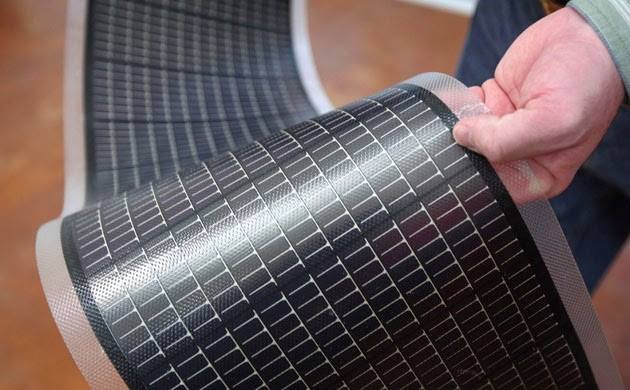Looking for a unique solar panel that can fit into any place without any problem?
If yes, then you came to the right place. Triangular solar panels are a unique kind of solar panel that can be installed on any curved surface and in tight spaces. They can be used in various settings, including residential, commercial, and industrial installations, and can be mounted on roofs, walls, or even on the ground.
They are also known as pyramid solar panels because of their triangular shape with a pointed top and a wider base resembling a pyramid. As solar technology advances, we expect to see more innovations and improvements in the design and efficiency of triangular solar panels.

But have you ever wondered why solar engineers developed triangular solar panels? What are their features, types, advantages, or disadvantages? Additionally, we will further discuss how to choose the best option for you.
What Are Triangular Solar Panels?
Triangular solar panels are also called triangular photovoltaic (PV) panels. Several triangular-shaped PV cells are joined together to produce a more extensive panel. It generates electricity by using solar energy from the sun. They are a relatively new innovation in the solar power industry.
Compared to regular rectangular solar panels, triangular solar panels have a unique design that enables them to be installed in unconventional spaces, like on the corners of buildings, on angled rooftops, or in other locations.
What I really like about these triangular-shaped solar panels is their flexibility, allowing them to fit in any location, including areas that may not be suitable for rectangular solar panels. This makes them ideal for use in urban environments, where buildings are often closely packed together.
Ultimately, triangular solar panels offer a distinctive and efficient way to generate solar energy, and their popularity is increasing as more people seek sustainable and renewable energy sources.
Features Of Triangular Solar Panels
The features of triangular solar panels can vary depending on the manufacturer and model. However, here are some basic features that are often associated with triangular solar panels:
- Shape: As the name suggests, triangular solar panels have a unique triangular shape. This allows them to fit into tight spaces or areas where rectangular or square panels may not fit.
- Size: Triangular solar panels are available in various sizes, from small panels designed for residential use to larger panels for commercial or industrial applications. So, we can choose it according to our requirements.
- Output: It can produce a range of outputs, from just a few watts to several hundred watts, depending on the size and efficiency of the panel. It is built uniquely to absorb more sunlight throughout the day for higher energy output.
- Durability: Traditional solar panels and these triangular solar panels are mostly made from durable materials that can withstand harsh weather conditions and other environmental factors because they are made to be used in an open area.
- Efficiency: The efficiency of these triangular panels can vary, but generally, they may be less efficient than rectangular or square panels of the same size. The triangular shape can produce less surface area for the solar cells to absorb sunlight. There is a lot more to know about solar panel efficiency.
- Installation: Triangular solar panels may require custom mounting hardware and installation techniques due to their unique shape.
Types of Triangular Solar Panels
- Monocrystalline Triangular Solar Panels: They are made from a single crystal of silicon, which makes them highly efficient at converting sunlight into electricity. They are often the most expensive type of solar panel, but they also have the highest efficiency of 16-24%.
- Polycrystalline Triangular Solar Panels: They are made from multiple silicon crystals, making them less expensive than monocrystalline panels. But the efficiency rates is typically low by 13-16%.
- Thin Film Triangular Solar Panels: They are made from thin layers of semiconductor materials, such as amorphous silicon with an efficiency rate between 7-18%. They are a great option for curved or uneven surfaces because they are lightweight and flexible.
- Bifacial Triangular Solar Panels: They are designed uniquely to capture sunlight from both sides of the panel, increasing its efficiency by 27% as compared to others. They can be either monocrystalline or polycrystalline.
- Hybrid Triangular Solar Panels: These combine two or more solar panels, such as monocrystalline and thin-film panels. This allows them to take advantage of giving you up to 15% more power than regular panels.
Advantages Of Triangular Solar Panels
Here are some advantages of using Triangular Solar Panels.
Increased Energy Output: Unlike traditional flat solar panels, triangular solar panels are made to capture more sunlight. Hence, they can generate more energy using the same area throughout the day.
Versatility: Triangular solar panels are a versatile option for residential and commercial applications, as they can be installed on roofs, walls, and other surfaces.
Durability: Triangular solar panels are typically made from high-quality materials to withstand harsh weather conditions. Compared to conventional solar panels, they require less maintenance because they are resistant to harsh weather conditions.
Eco-Friendly: These solar panels are a sustainable and renewable energy source, making them environmentally friendly. I like that it does not emit greenhouse gases or pollutants into the environment while producing electrical energy.
Cost-effective: The initial cost of installing triangular solar panels can be higher than traditional solar panels, but they can provide long-term savings in energy bills and maintenance costs. They also have a longer lifespan, so they may not need often.
Disadvantages Of Triangular Solar Panels-
Other than the benefits, some disadvantages of triangular solar panels are discussed below.
Lower efficiency: Triangular solar panels could not be as effective as square or rectangular panels because of their unusual shape. The corners of the triangular panels may not receive as much sunlight as the center, which could result in low efficiency.
Higher cost: These solar panels are more expensive than other solar panels because of their complex design and manufacturing process. And only few of manufacturers, like Trienergia form Italy and Salcantay from Spain made them. It is also costly to install due to its unique shape, which may require custom mounting hardware and installation techniques.
Limited availability: These panels are not widely available in the market because of their less common design. As a result, finding appropriate parts or replacements may become more challenging.
Prone To Damage: The corners and edges are more prone to damage, which can reduce their lifespan and efficiency. Sometime hail can also damage these panels, you should also know how to protect it from hail.
High Maintenance: Triangular solar panels require higher maintenance than traditional solar panels. Cleaning and maintaining these solar panels can be challenging due to their unique shape.

How To Choose The Best Triangular Solar Panels?
While choosing the best triangular solar panels, I suggest you always consider some factors:
- Always look for panels with high-efficiency ratings, which will generate more power per unit of surface area.
- Consider the size of the triangular solar panels because it is necessary to choose a specific size to fit into a particular space.
- Look for panels made from high-quality materials, such as tempered glass or aluminum, which can be more durable than those made from cheaper materials.
- Consider the cost of the panels and how they fit into your budget because triangular solar panels have a high initial price and require higher installation charges.
- Consider the compatibility of the triangular solar panels with other components of your solar system, such as inverters, batteries, and charge controllers.
By considering these factors and doing thorough research, you can choose the best triangular solar panels for your needs and maximize the benefits of solar energy.
Frequently Asked Questions:-
- How do triangular solar panels differ from traditional solar panels?
Triangular solar panels differ from rectangular or square panels primarily in their shape. Triangular panels are designed with an irregular triangular shape, while rectangular or square panels have a more uniform shape. Most of the time, the differences depend on the specific make and model of the panels.
- Are triangular solar panels more expensive than traditional solar panels?
Unlike traditional solar panels, triangular solar panels are more expensive to manufacture due to their unique shape and costly to install because of the requirement of custom mounting hardware and installation techniques.
- What are the maintenance requirements for triangular solar panels?
Triangular solar panels require regular cleaning and maintenance to ensure maximum efficiency. Their unique shape can make this task more challenging because they can accumulate more dirt and debris in the corners than rectangular or square panels.
- Can triangular solar panels be used in off-grid applications?
Yes, triangular solar panels can be used in off-grid applications. They require additional customization and hardware to ensure optimal performance in an off-grid system or stand-alone power system. So it’s recommended to work with an experienced solar installer to ensure the system is designed and installed correctly.

- Can I use triangular solar panels for residential applications?
Yes, you can surely use triangular solar panels for residential applications because of their flexible build, which allows them to be set up in all usual and unusual locations.
Conclusion
Finally, triangular solar panels play a very important role in today’s world because they allow us to be eco-friendly without much effort. If you have the perfect solar panel according to your needs, you will never need to worry about having sufficient energy or hassle-free service.
They offer several advantages over traditional rectangular or square panels. Their unique shape allows them to fit into tight spaces and capture sunlight from different angles throughout the day, which can increase their energy output.
However, every coin has two sides, so some disadvantages include lower efficiency, higher cost, limited availability, complex maintenance, and reduced durability.
So, it’s important to carefully consider the pros and cons of triangular panels when deciding if they are the right choice for a particular application. Ultimately, the suitability of triangular solar panels depends on specific needs; otherwise, square or rectangular solar panels have an advantage over triangular ones.
Ray is an avid reader and writer with over 25 years of experience serving various domestic and multinational private and public energy companies in the USA.


